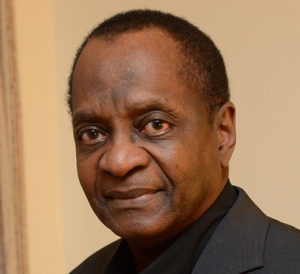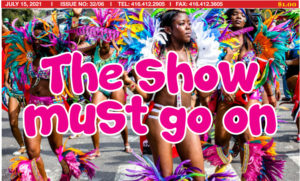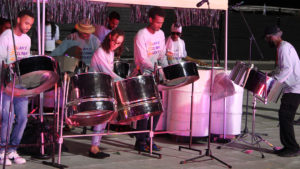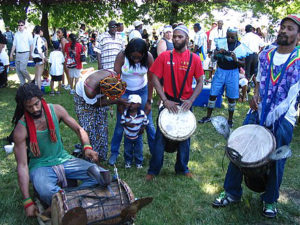
By Lennox Borel
 The year was 1967. The Caribana Festival was established by the Caribbean Community in Toronto to celebrate Canada’s 100th birthday. It was an exciting panoply of colourful carnival costumes, calypso music, steel band music, Caribbean food, and hundreds of thousands of people of diverse backgrounds enjoying the festivities. The Festival was a tremendous success.
The year was 1967. The Caribana Festival was established by the Caribbean Community in Toronto to celebrate Canada’s 100th birthday. It was an exciting panoply of colourful carnival costumes, calypso music, steel band music, Caribbean food, and hundreds of thousands of people of diverse backgrounds enjoying the festivities. The Festival was a tremendous success.
1968…The Show Must Go On. After the success of what was to be a one-time tribute to Canada, the Caribbean community decided to make the Festival an annual affair. Despite many challenges, the Festival has continued up to the present day. Every year, ostensibly there was a beautiful, successful parade of the bands which was the showcase of the Festival. Other ancillary events such as the King and Queen Competition, the Children’s Carnival Parade, Calypso Monarch competitions, Pan Alive, boat rides, carnival balls, all seemed successful and were thoroughly enjoyed by everyone. But behind the scenes the Festival was plagued by money woes. It was always an economic boon for the City of Toronto, the business community and

all levels of government except the Festival organizers and producers. The Festival made Canada proud. It has been hailed around the world as one of the best carnivals outside of Trinidad and Tobago.
Another challenge was the frequent name change of the Festival depending on who was the title sponsor. The Festival was known originally as Caribana according to the founders. Then it became known as Scotiabank Caribana, Scotiabank Toronto Caribbean Carnival, Peeks Toronto Caribbean Carnival and finally Toronto Caribbean Carnival. Nevertheless, despite legal fights as to the name rights and niceties of title sponsorship, everyone still calls it Caribana. All over the world people say, “I am going to Toronto for Caribana”, the name that is still popularly used in the media.
There have been some incidents which reflected negatively on the Festival because they occurred at the same time, but did not necessarily have any association with the Festival, and which the organizers have disavowed. Yet the media persisted in making some kind of connection between these

incidents and the Festival. There were incidents of violence such as shootings, unfortunate accidents leading to death, gang fights, all co-incidental with the Festival but not because of the Festival. Fortunately in recent years these incidents have abated.
Perhaps the most admirable thing about the Toronto Caribbean Carnival (Caribana) is its longevity. There has been a revolving door of management boards with different visions and modus operandi, internal dissension among the organizers, boycott threats by some of the stakeholders among the mas’, pan and calypso fraternity, but the show goes on.
Such bacchanal in other cities in North America has lead to splits in the production of the Festival, or even dissolution of the whole event in those cities. In Toronto, this has not happened. In the end the community pulls together and the show goes on. The music does not stop.
In 1967 the founders had a vision and a dream. To quote Senator Ted Kennedy, “The work goes on, the cause endures, the hope still lives and the dream shall never die”. With continuous goodwill of the Caribbean community, the Toronto Caribbean Carnival will endure.



